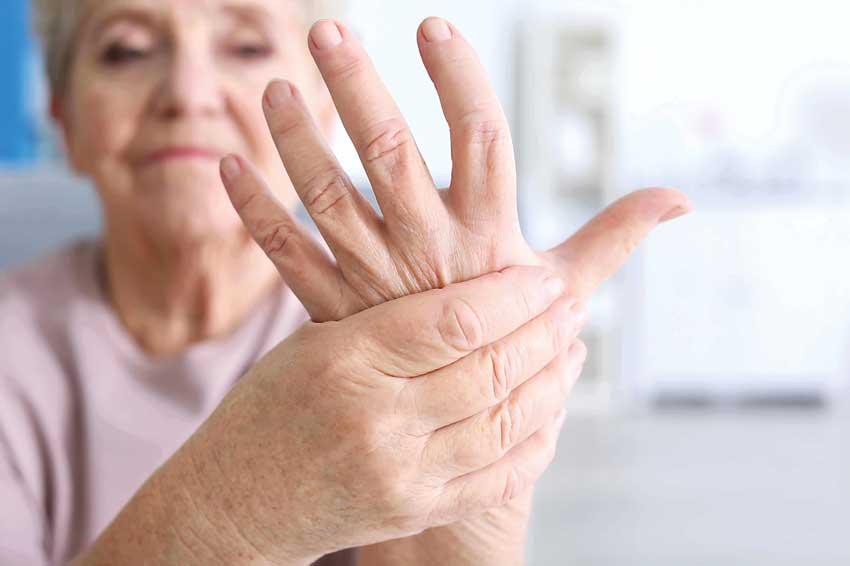19 Nov 2021 - {{hitsCtrl.values.hits}}

 Arthritis is a disease category that includes numerous different ailments, out of which osteoarthritis and rheumatoid arthritis are common. The medical specialty that deals with arthritis is called rheumatology. Presentation and manifestations of joint diseases vary among different age groups. Although a clearly defined specialty exists for paediatric rheumatology, a dedicated sub specialty for the geriatric population is currently unavailable.
Arthritis is a disease category that includes numerous different ailments, out of which osteoarthritis and rheumatoid arthritis are common. The medical specialty that deals with arthritis is called rheumatology. Presentation and manifestations of joint diseases vary among different age groups. Although a clearly defined specialty exists for paediatric rheumatology, a dedicated sub specialty for the geriatric population is currently unavailable.
In 1946 the Sri Lankan population aged 60 or above was 5.5 percent. After 6 decades, it expanded to 12.4 percent in 2012. Considerable growth of the female population percentage was also observed, and this currently stands at 51.6% females according to the year 2012 data. Both these data sets are relevant in rheumatology, as the female gender is associated with some of the most lethal types of arthritis we encounter, namely Lupus and Rheumatoid arthritis. In Sri Lankan elderly females, we also observe a high incidence of osteoarthritis of weight-bearing joints which is sometimes disabling.
An unmet challenge
With the increasing elderly population, the medical sector in Sri Lanka should be geared up to handle numerous non-communicable ailments like heart, lung, and kidney disease. But arthritis has overtaken these traditionally screened diseases, to an everyday illness of the old. A forced sedentary lifestyle with intermittent pandemic lockdowns might be one such reason for arthritis to be commonly encountered. Changes in the immune system might pave the way for certain arthritides. Weight gain because of a modern high calory diet in the elderly might lead to joint diseases in the legs. Regular updates on arthritis types through media also help in encouraging patients to pay a visit to doctors.
Therefore, awareness about diseases is also contributing to the rise in case detection. Several diseases such as osteoarthritis, osteoporosis, pseudogout, and polymyalgia rheumatica are known in the elderly.
Although the number of elderly patients with joint disease is increasing, the current Sri Lankan health sector is struggling to cope with this demand. Medical teams have been busy containing the COVID pandemic, and the attention given to controlling non-communicable diseases like, diabetes, arthritis, cancer or lung disease is less.
What are the arthritis types seen in the elderly?
We understand certain joint-related diseases that are exclusively seen in the young and the middle-aged. Inflammatory arthritis types, namely spondyloarthritis, rheumatoid arthritis, and Lupus, are seen in young patients. Inflammatory arthritis has an essential manifestation which is joint swelling. When patients with untreated joint swelling are improperly managed, they end up with permanent deformities. These deformities give rise to long-term pain which could disable the patients for the rest of their life.
Other than the above conditions, diseases like polymyalgia rheumatica might go unnoticed. Polymyalgia affects the shoulder and hip girdle and creates severe pain and stiffness. Rarely this can proceed to a headache which is termed temporal arteritis, and also eyesight issues.
Osteoarthritis creates discomfort of mainly weight bearing joints like the hips, knees, ankles and also involves the small joints of hands or feet. This disease usually appears in the middle-aged and progresses. In Sri Lanka, elderly patients, especially women who are overweight, suffer from extensive osteoarthritis of the knees. Severe pain restricts mobility, further worsening the obesity status in these patients.
Osteoporosis, although not a joint disease, can present with fractures due to reduced bone strength. Pure osteoporosis does not cause pain but if minute fractures of the spine leads to pressure effects of nerves, it can cause severe pain. Hips, spine, and forearm are common sites for fractures in this ailment.
Pseudogout is also a condition more common in patients aged 60 and above. It mainly affects the knees and the reason behind is deposition of a substance called calcium pyrophosphate. This is a crystal which is manufactured within joints in the elderly. Bouts of pain in knees are key features, and this is rarely diagnosed among Sri Lankans.
With the increasing elderly population, the medical sector in Sri Lanka should be geared up to handle numerous non-communicable ailments
The way forward….
A screening programme for arthritis should exist similar to what is practiced for diabetes, high blood pressure, cancer, and heart disease. The purpose of the screening is twofold. To catch and treat arthritis early so that the elderly can lead a comfortable life. And to accustom the geriatric patients so that they are trained to self-manage the disabilities that come with arthritis is the other purpose.
Health care teams should also receive specific training as monitoring for drug side effects is essential in the elderly. It is helpful to screen patients for dementia/ memory loss as issues related to drug compliance might hinder treatment.
(The writer is a Consultant in Rheumatology and Rehabilitation
At the Matara General Hospital)
20 Dec 2024 5 hours ago
20 Dec 2024 6 hours ago
20 Dec 2024 7 hours ago
20 Dec 2024 8 hours ago
20 Dec 2024 9 hours ago